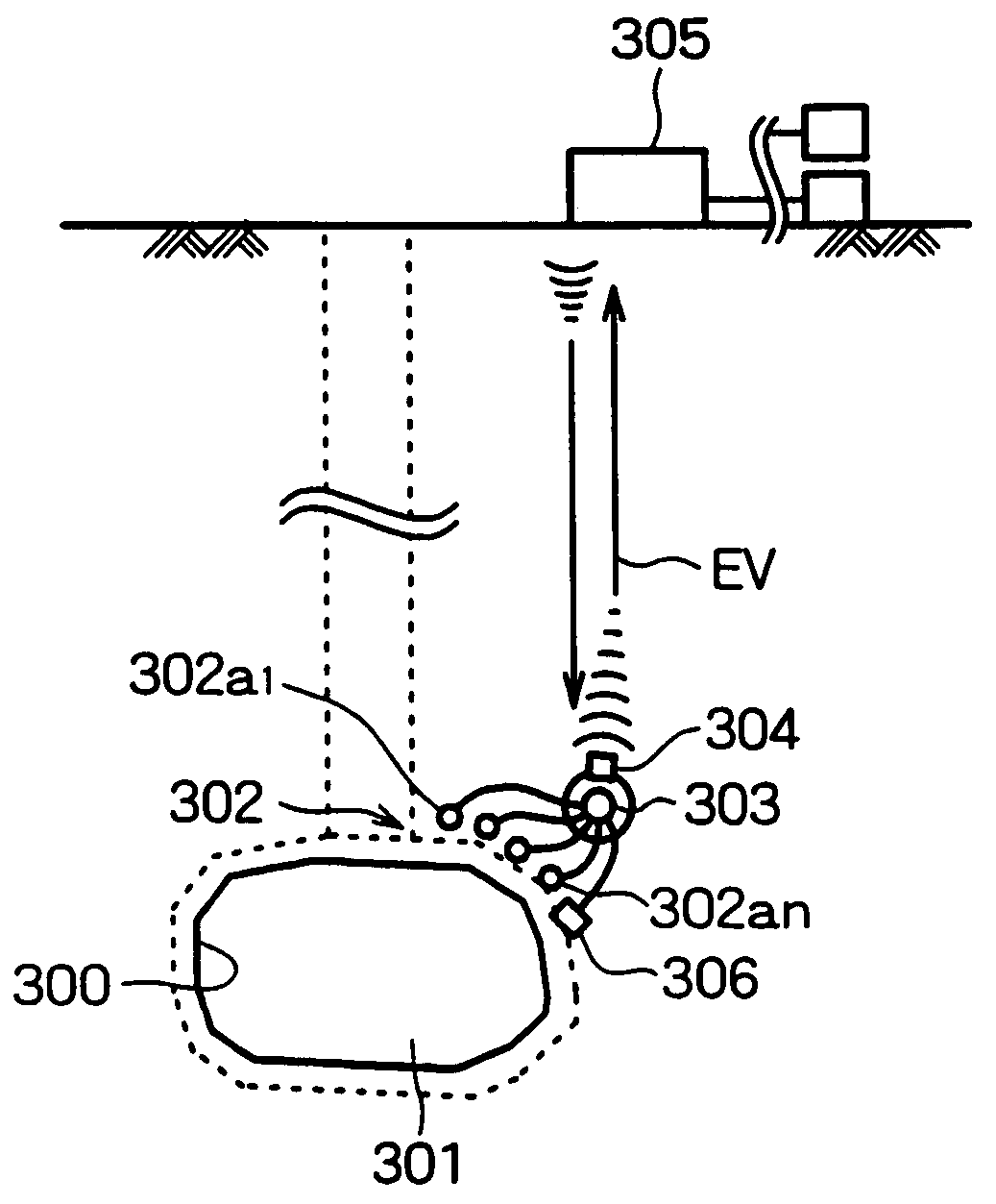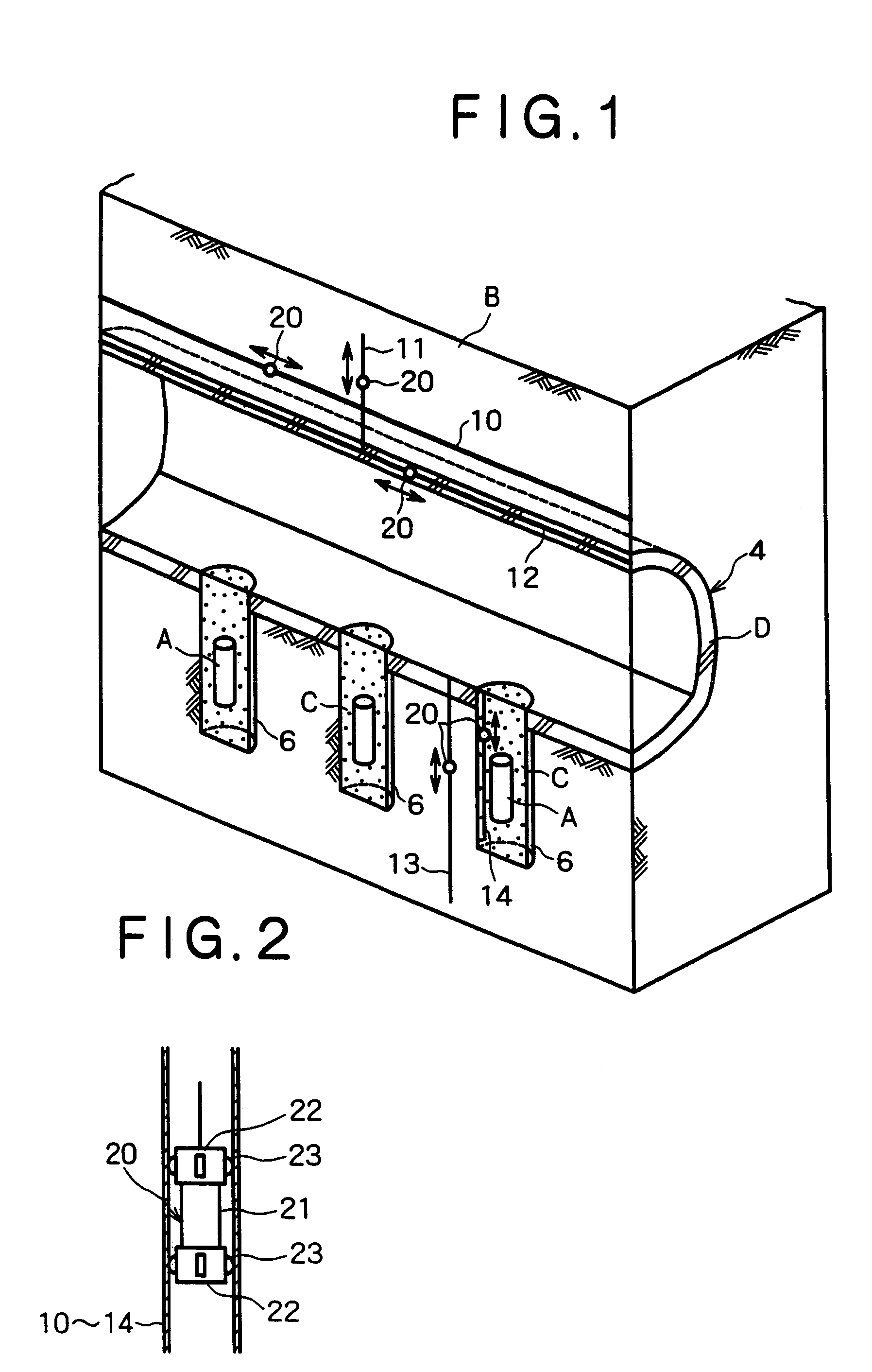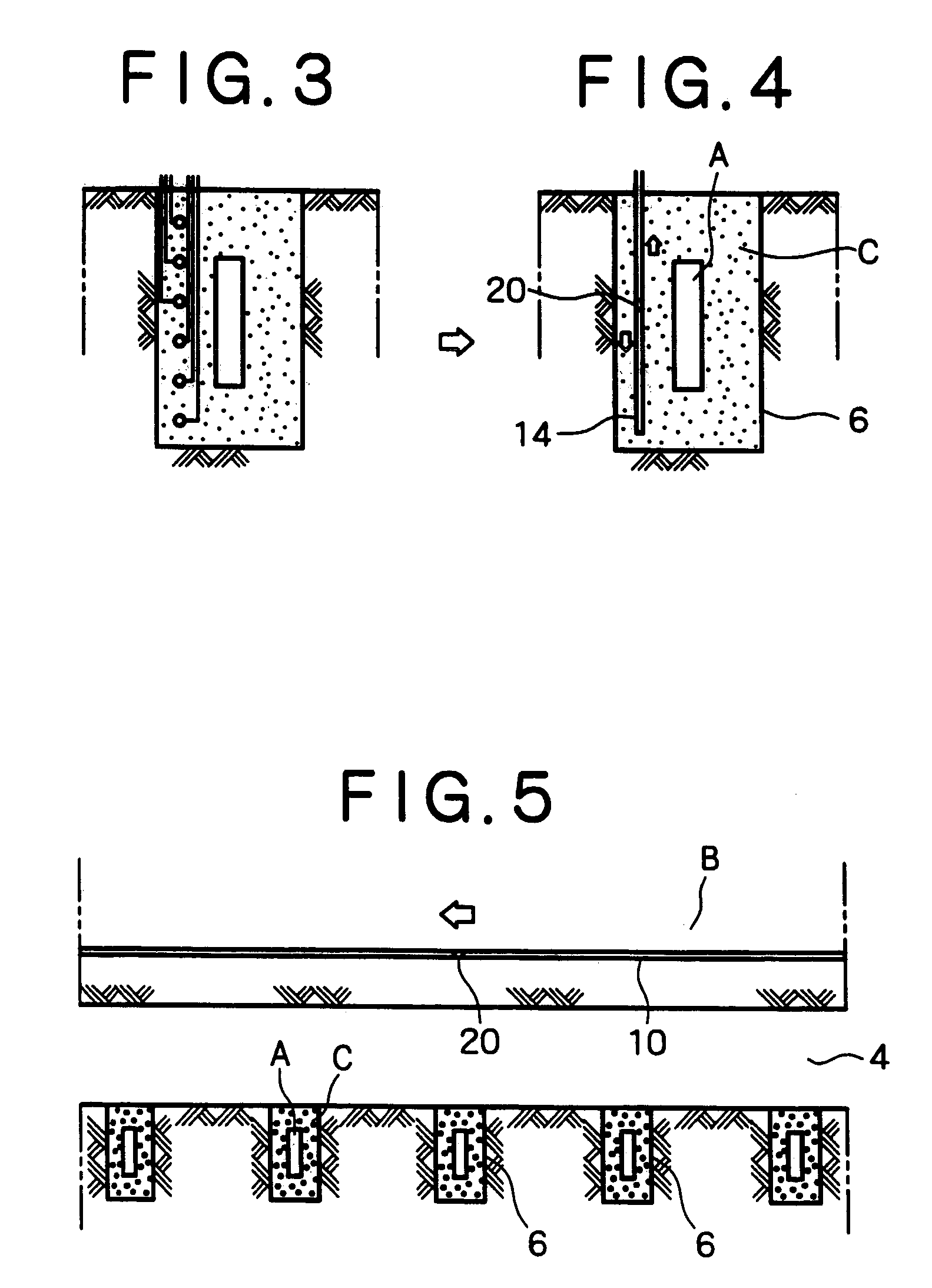Stratum disposal monitoring system
a monitoring system and stratum technology, applied in the field of stratum disposal monitoring system, can solve the problems of increasing cost, insufficient durability of monitoring equipment, and the monitoring method not keeping up with monitoring
- Summary
- Abstract
- Description
- Claims
- Application Information
AI Technical Summary
Benefits of technology
Problems solved by technology
Method used
Image
Examples
Embodiment Construction
[0110]The present invention will now be described with reference to illustrated embodiments. The illustrated embodiments are applications of the present invention to a stratum disposal field for high-level radioactive wastes. FIGS. 1 to 38 respectively show an embodiment of a gallery monitoring method with a running path and a movable monitoring device of the present invention.
[0111]In FIGS. 1 and 2, there is shown an application of the above gallery monitoring method to the layout of the vertical disposal-hole pattern as shown in FIGS. 46 to 49. A running tube 10, parallel to an axial direction of a disposal gallery 4, is installed in a rock bed B in the vicinity of the gallery 4. A running tube 11 is also installed in the rock bed B in the vicinity of the gallery 4 at a right angle to the axial direction of the gallery 4. In addition, a running tube 12, parallel to the axial direction of the disposal gallery 4, is installed within or on a support (such as sprayed concrete and seco...
PUM
 Login to View More
Login to View More Abstract
Description
Claims
Application Information
 Login to View More
Login to View More - R&D
- Intellectual Property
- Life Sciences
- Materials
- Tech Scout
- Unparalleled Data Quality
- Higher Quality Content
- 60% Fewer Hallucinations
Browse by: Latest US Patents, China's latest patents, Technical Efficacy Thesaurus, Application Domain, Technology Topic, Popular Technical Reports.
© 2025 PatSnap. All rights reserved.Legal|Privacy policy|Modern Slavery Act Transparency Statement|Sitemap|About US| Contact US: help@patsnap.com



